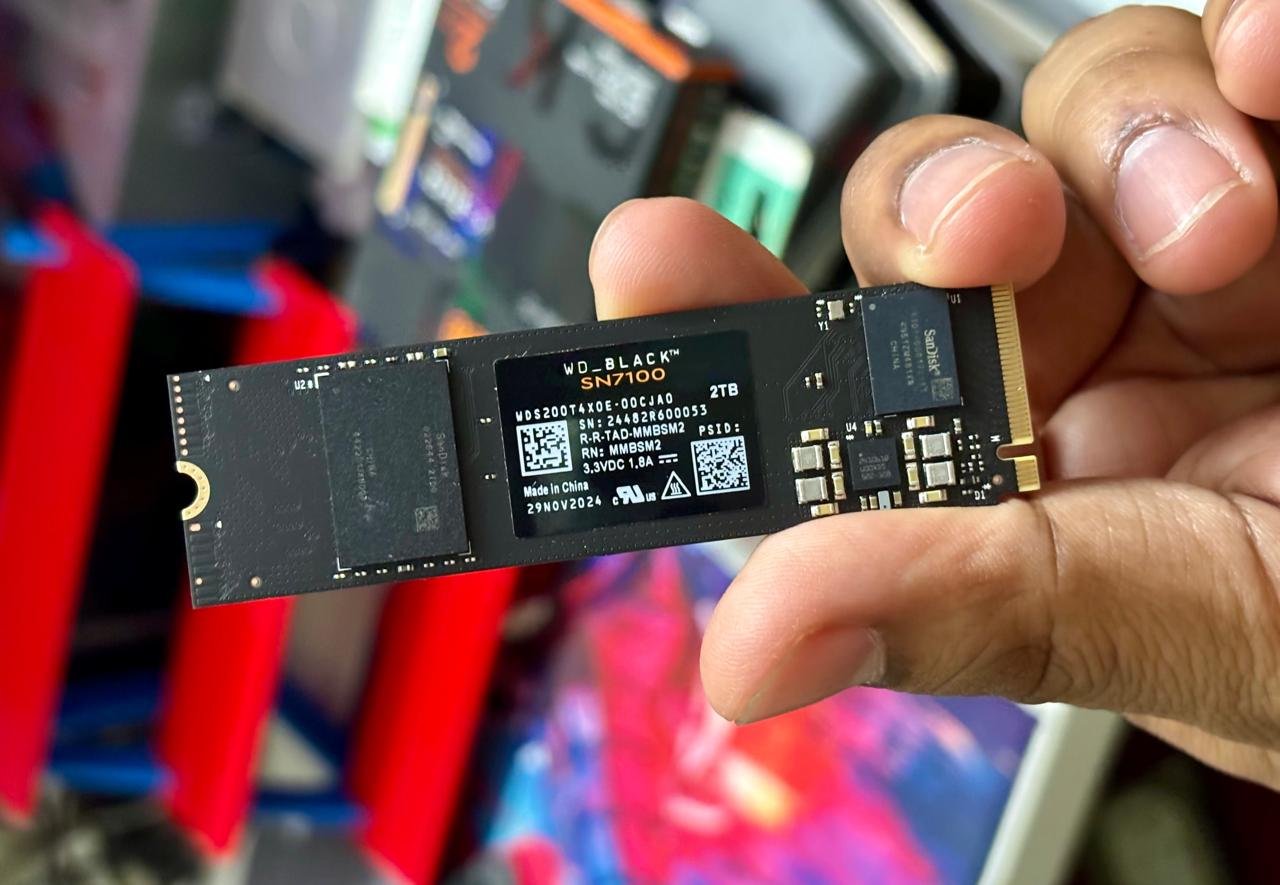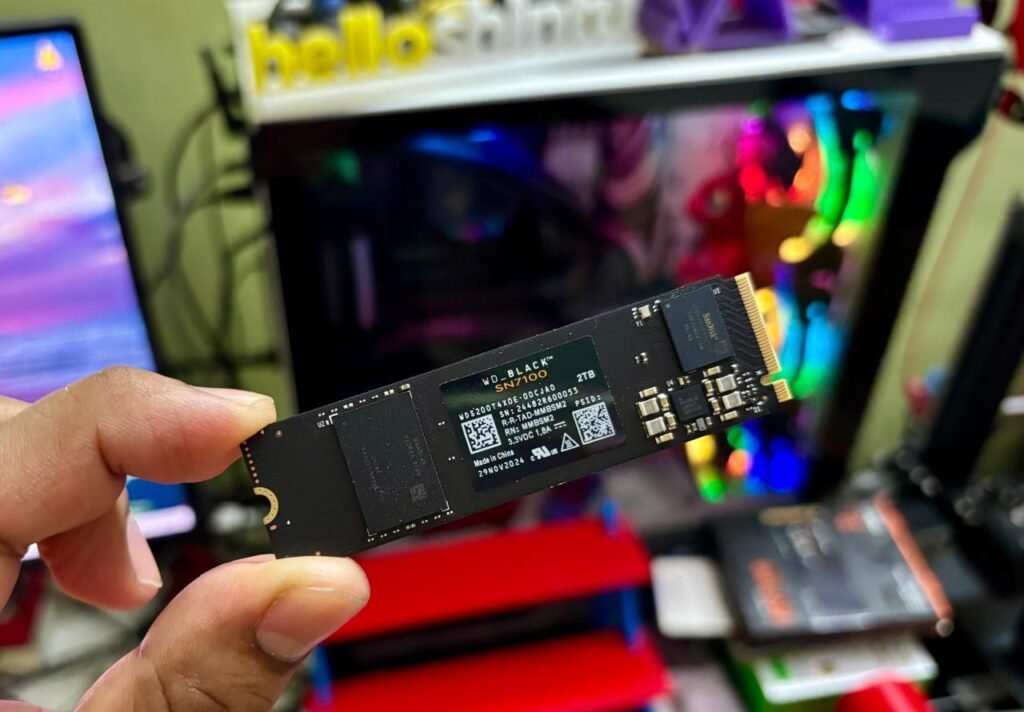The WD_BLACK SN7100 NVMe Gen 4 SSD strikes an excellent balance between speed, efficiency, and affordability, making it a worthy upgrade for gamers, creators, and general users. While it can't match the raw firepower of Gen 5 drives like the SN8100 or Samsung 9100 Pro, its real-world performance is more than sufficient for 99% of tasks, all at a fraction of the cost. The design's simplicity aids portability, though investing in a heatsink is recommended for heavy users. If you're seeking a reliable, high-value SSD that punches above its weight, the SN7100 absolutely deserves a place in your system.
The Good
- Up to 7,250 MB/s read speeds.
- 1,200 TBW endurance.
- Fast load and transfer times.
- Affordable price
The Bad
- No integrated heatsink.
- Potential thermal throttling.
- Not as powerful as Gen 5 drives.
-
Design
-
Performance
-
Power Efficiency
In the past few years, NVMe SSDs have emerged as game-changers, dramatically boosting system responsiveness, load times, and overall efficiency. Unlike traditional SATA drives, NVMe leverages the PCIe interface to deliver blazing-fast data transfer speeds, reducing boot times to seconds, accelerating application launches, and enabling seamless multitasking. For gamers, creators, and professionals, this means quicker level loads in games, faster rendering in video editing software, and smoother handling of large datasets. However, you don’t necessarily need the cutting-edge Gen 5 NVMe SSDs to achieve top-tier performance. These latest Gen 5 models, while impressive, come at a premium cost that may not justify the gains for most users. In my previous reviews, I highlighted the WD_BLACK SN8100 NVMe SSD 2TB, a Gen 5 drive boasting sequential read speeds of over 10,000 MB/s; however, its high price made it more suited for enthusiastic buyers. The Samsung 9100 Pro NVMe PCIe 5.0 SSD also showcased impressive power and endurance, but its cost restricted it to high-demand professional workflows. This time, we had the opportunity to review the WD_BLACK SN7100, a Gen 4 NVMe SSD that’s less powerful on paper than its Gen 5 counterparts but far more affordable. Priced(₹13,282) competitively for everyday consumers, it promises to bridge the gap between performance and value. But does this drive deserve a spot in your system? Let’s dive in.
Design and Build Quality
The WD_BLACK SN7100 embraces a minimalist design philosophy, featuring a sleek black PCB adorned with essential components like the controller and NAND flash chips. This no-frills approach keeps things lightweight and compact, measuring in the standard M.2 2280 form factor, which ensures compatibility with a wide range of desktops, laptops, and even some gaming consoles that support M.2 slots.

One notable drawback is the absence of an integrated heatsink. While this helps maintain a low profile and reduces costs, it becomes a disadvantage during periods of intense workload. Without thermal throttling safeguards, the drive can heat up under sustained stress, potentially impacting long-term performance. That said, the design prioritizes power efficiency. Western Digital claims up to 100% better efficiency than its predecessor. The black aesthetic aligns with the WD_BLACK lineup’s gaming vibe. Still, users pushing the drive hard should consider adding a third-party heatsink or depending on the motherboard-provided cooling solutions for optimal operation.
Performance
Performance is where the SN7100 truly shines, demonstrating that Gen 4 SSDs still have plenty of life left. Officially rated for sequential read speeds of up to 7,250 MB/s and write speeds of up to 6,900 MB/s on 1TB and 2TB models, it saturates the PCIe 4.0 x4 interface, delivering near-maximum theoretical throughput. In my testing, I achieved figures very close to these specifications, with around 7,200 MB/s reads and 6,800 MB/s writes in benchmarks like CrystalDiskMark, making it one of the fastest Gen 4 drives I’ve experienced.
For real-world scenarios, the drive excels in gaming and content creation. Game load times in titles like Cyberpunk 2077 decreased by 20-30% compared to older Gen 3 drives, and file transfers of large 4K video files were remarkably quick. Random read/write IOPS hit impressive marks of up to 1,000K/1,400K, ensuring snappy OS responsiveness and quick app launches. It’s DRAM-less, relying on Host Memory Buffer (HMB) technology, yet it outperforms many DRAM-equipped competitors in power-constrained environments.
However, thermal management is a mixed bag. During prolonged multi-threaded read/write operations, such as copying massive datasets or running disk-intensive simulations, the drive warmed up to around 70-75°C, triggering minor throttling that dipped speeds by 10-15%. This is where the lack of a heatsink becomes apparent, as adding a simple third-party aluminium heatsink stabilized temperatures at 55-60°C and maintained peak speeds throughout extended tests. Endurance is solid, with a 1,200 TBW rating for the 2TB model, backed by a 5-year warranty, ensuring longevity for most users.


